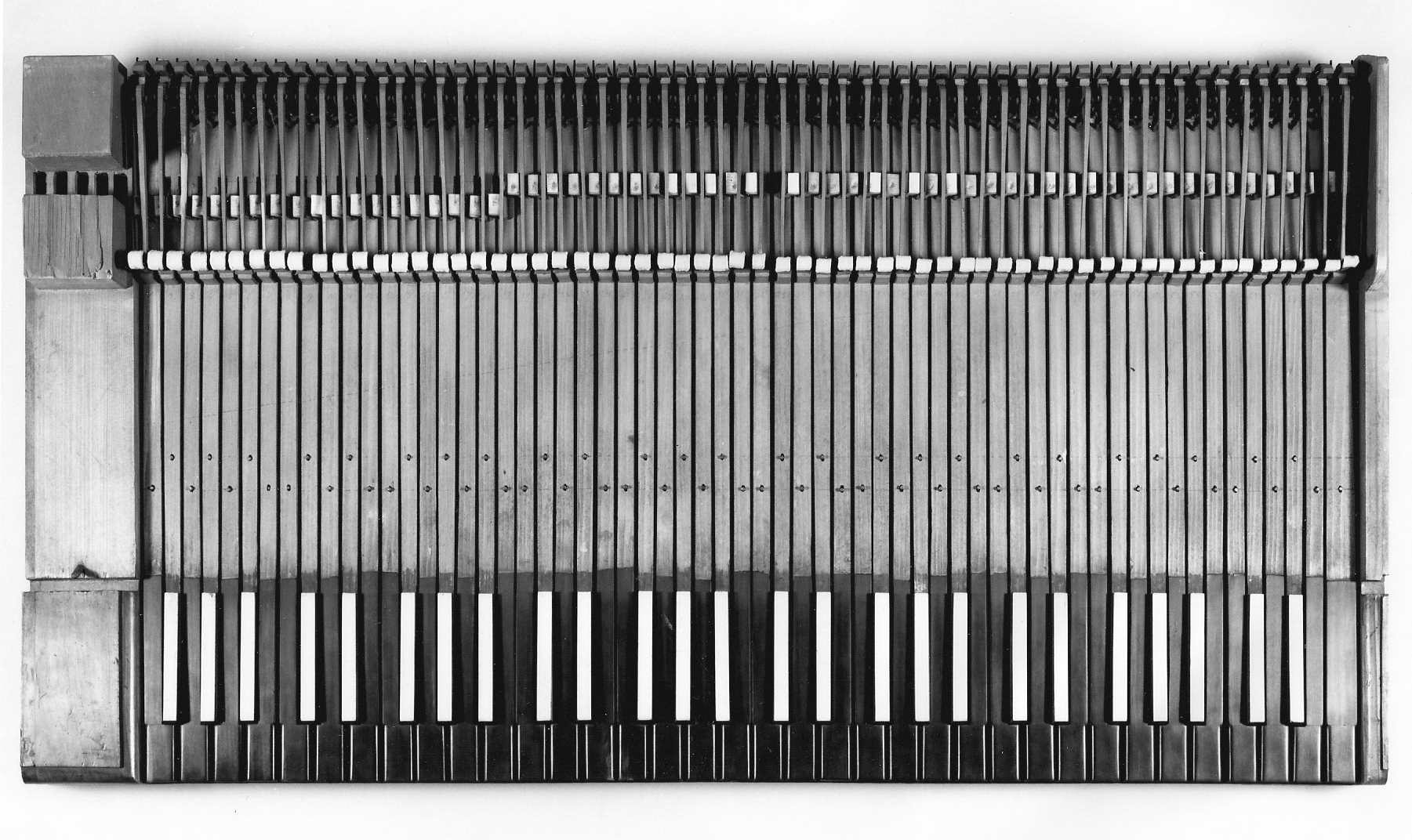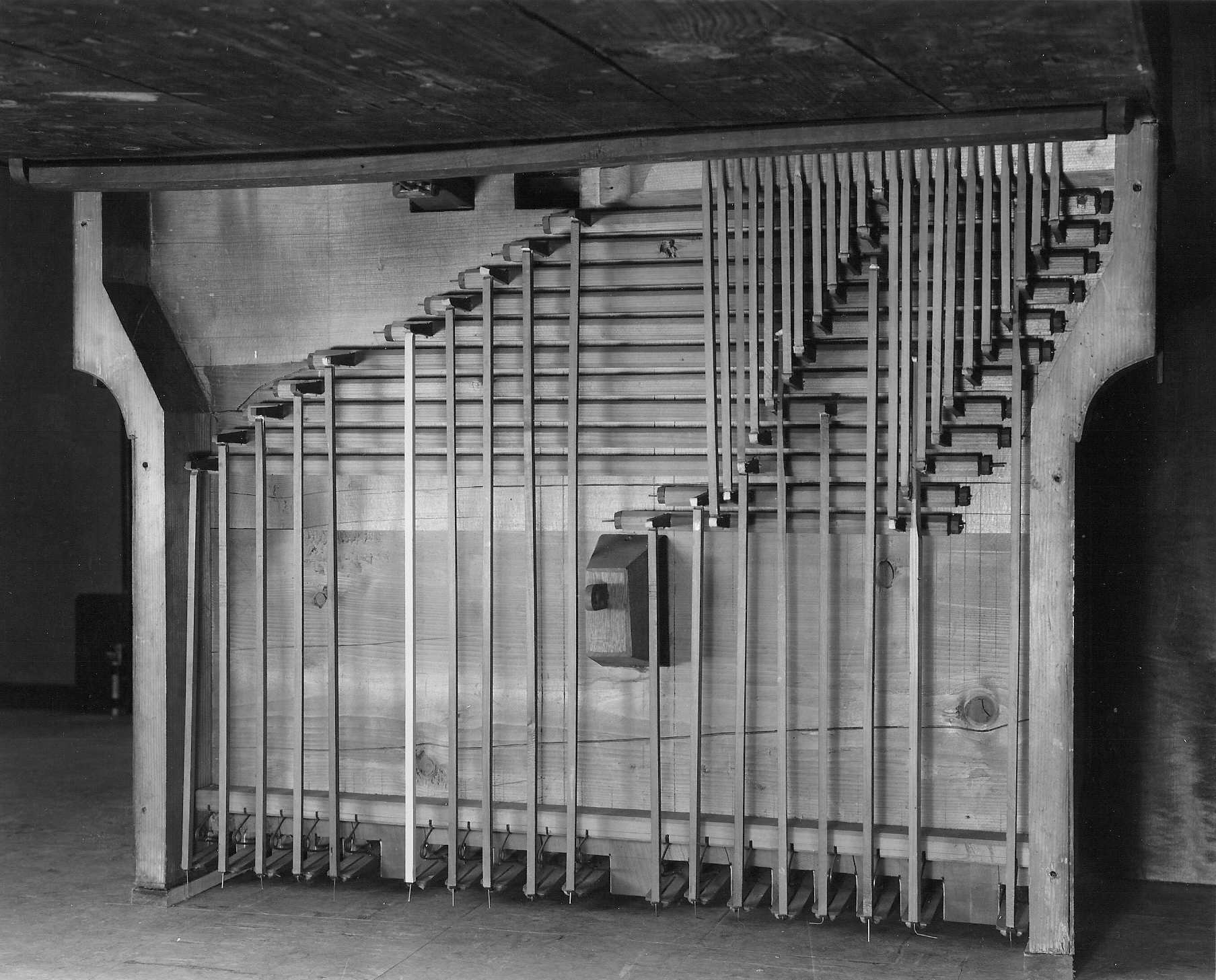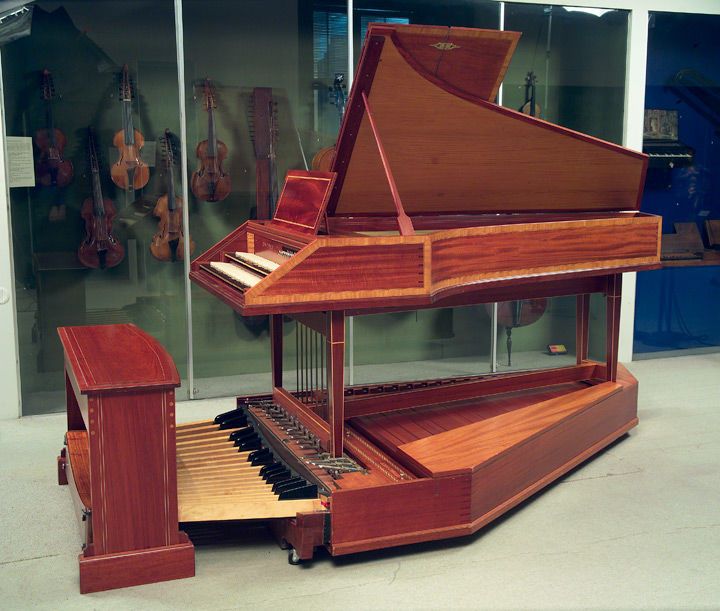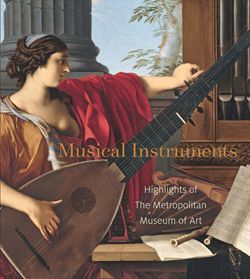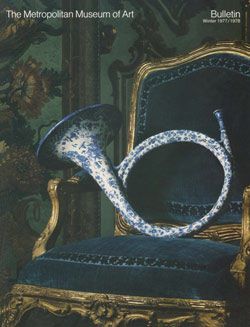Grand Piano
Attributed to Johann Schmidt Austrian
Not on view
This extraordinarily rare piano from about 1790 has a pedal board with eighteen notes that are played like pedals on an organ. Pedal stringed-keyboard instruments were not uncommon in the eighteenth century. Johann Sebastian Bach is known to have owned a pedal harpsichord and Wolfgang Amadeus Mozart's piano by Anton Walter originally had a pedal mechanism. Mozart's D-minor piano concerto, K. 466, requires the use of a pedal mechanism as it cannot be performed with the range of the manual alone.
This example is attributed to Johann Schmidt of Salzburg, a friend of the Mozart family, whom Leopold Mozart (Wolfgang's father) helped to secure the job of court organ and instrument maker in Salzburg. Indeed, cleaning done in the 1980s revealed the initials of Wolfgang Mozart scratched inside long ago. It is possible that Mozart played this piano in Salzburg.
Technical description: Cherry and cherry veneer case, panel and frame lid; pedal mechanism enclosed with vertical enclosure serving as front support in place of front legs, hinged lid to cover pedals; oak pinblock veneered to match soundboard, turned legs; compass: manual FF-f3 (61 keys), pedal EE/CC-A (18 pedals), black-stained wood naturals, bone-covered accidentals, leather covered pedals; unpierced tuning pins, double-strung throughout, lowest 6 pairs copper-wound over brass (modern strings); manual action: German with escapement and no check; pedal action: Anglo-German, operating a separate row of 24 hammers that strike the lowest manual notes plus 5 additional notes below the manual compass; pedals octave-coupled; damper jacks rise in rack over strings, dowel-shaped lower portion of damper jacks pass through leather loops and are lifted by leather-lined wood blocks glued to key levers; lowest 24 dampers are lifted independently of manual key action when pedals are operated; leather pads on the backfalls (which are also involved in coupling the pedals to their respective hammers) engage an additional projection on the dampers; lowest 19 key levers are cut away to permit projections to pass through to the backfalls; 2 knee levers: dampers operated by either knee, second lever, controlling "piano" stop (leather pads moved between hammers and strings) operated by right knee, handstop engages "bassoon" stop (loop of heavy paper or parchment) buzzing over lowest 26 pairs of strings.
#Malcolm Bilson accompanying Sonya Monosoff on violin (55.86). Historical Instruments in Performance: Mozart Sonatas for Violin and Clavier. Pleiades Recordings M1807
-
Malcolm Bilson accompanying Sonya Monosoff on violin (55.86). Historical Instruments in Performance: Mozart Sonatas for Violin and Clavier. Pleiades Recordings M1807
-
Rondo in D Major K. 485 by Wolfgang Amadeus Mozart. Performed by Malcolm Bilson for Lend Us Your Ears radio program, 1978.
Playlist
This image cannot be enlarged, viewed at full screen, or downloaded.
This artwork is meant to be viewed from right to left. Scroll left to view more.


